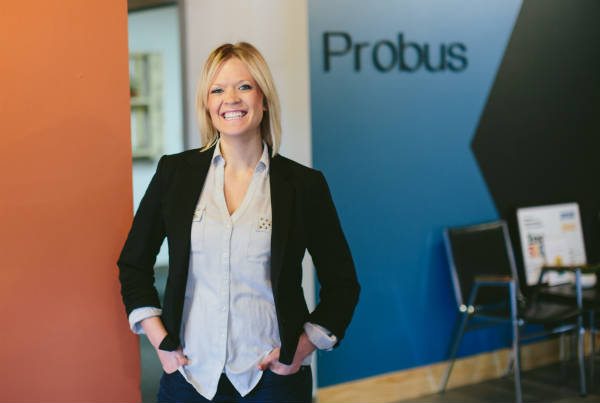Most folks have seen or heard about the show Mad Men. One of the dismaying characterizations of the agencies featured is the amount of outlandish and non-essential activities that occur. This depiction did not help our industry. Having worked with small and large companies throughout my career, a consistent yet unspoken worry circles the idea that the agency will be wild with money and tame on results.
We all want the best value for our investments, i.e., the highest return for the lowest costs. Those that are doing it correctly know that many times, cheaper isn’t, in fact, more valuable. It’s also wise to acknowledge that the inverse is also true: Expensive doesn’t mean good. Knowing that truth is in the middle, it’s important to talk a bit about what attributes exist in an agency to know that what you, the client, receive is the most valuable.
It boils down to three things: First, it starts with the DNA of the agency. Are they pragmatic and aware that client money isn’t ephemera? Second, do the folks doing work know what it means to prioritize for outcome? Three, what is the client’s role in respectively urging the agency to keep lean?
Snap’s DNA
Snap started as the marketing department for an e-commerce company. Literally, the folks that were running the day-to-day for online sales were those who also worked on Snap’s clients. Everything we did had to have ROI because we were very keen to understanding that we were paying for our own jobs to exist. Being lean and efficacious was a given.
When we sold our e-commerce companies to put 100 percent focus on Snap as an agency, we were still completely bootstrapped. For those unaware, Investopedia properly defines this as:
“Bootstrap is a situation in which an entrepreneur starts a company with little capital. An individual is said to be bootstrapping when he or she attempts to found and build a company from personal finances or from the operating revenues of the new company.”
From the very beginning, Snap’s methodology and culture was built on the idea that every dollar out first had to be brought in. When you’re working on your own businesses and departments, the same type of mindset will consistently yield pragmatic results.
Department Ideas
There’s a throwaway joke from John Wanamaker: “Half the money I spend on advertising is wasted; the trouble is I don’t know which half.”
That’s not a great feeling for the guy explaining budgets to his boss or the woman signing the outgoing checks. Part of the strength of digital marketing is the heavy quantification of all effort and the short- and long-term value of outcome. What can we do as an agency to make things clearer?
I asked this same type of question to a few of the folks at Snap: How do we provide the best wisdom in using our client’s money?
 Tim Brown, Director of Marketing
Tim Brown, Director of Marketing
I think of every hour I spend doing work for a client as a sensitive investment of their capital that I want to be a seed for more money for them in the future. So I prioritize my hypotheses based on this understanding whether it be for conversion rate optimization or SEO: What is going to make this company money and give them stronger brand exposure online? I try not to waste the precious resource, and I try to understand the time I spend for clients equals energy and resources for the people within the companies we do work for. In this way, focusing on the numbers really is a demonstration of our humanity.
 Brett Middleton, Director of Media
Brett Middleton, Director of Media
Our approach to PPC and other digital, paid media borders on a financial analysis. When creating the ramp-up strategy (after doing keyword research, ad creation, consumer surveys, etc.) we look at expected cost per click and conversion rate to plan expected conversions at ad-spend levels. The focus here is on mixing a business approach into a marketing tactic. We never lose site of ROI and make sure the numbers work before campaigns launch.
 Morgan Molitor, Director of Social Media
Morgan Molitor, Director of Social Media
Being an entrepreneur at heart, I work extremely smart and think strategically for my clients. Most importantly, I build quality relationships creating friendships with my clients. They trust me. I am, after all, the one representing their entire brand on social. I am an extension of their team working hard for one common goal—to make them look cool/capable online. Oh, and to make a lot of money for them.
I think being a food server for over 15 years gave me the skills I use today. You never run back and forth and all around. You get stuff done and fast. And you always make sure your customers are happy. I apply this same strategy to my career. Having this mindset saves my clients time and money.
 Abby Olson, Director of SEO
Abby Olson, Director of SEO
I have two favorite questions we ask through our onboarding process. The first is, “What makes your business special?” This answer typically begins with a UVP, something along the lines of “we’re cheaper, faster, nicer, etc.” When we dig a level deeper we’ll get real answers about the employees, their mission, their culture, perhaps even a story of how the company got started. This is what allows me to get insight directly from the business owner and determine why he’s so passionate about his work. I start to think of this company as a living, breathing entity that needs a little SEO TLC to get the growth it deserves.
My second, possibly more favorite question is, “How do you help people?” Regardless of the industry they’re in, every business was created to solve someone’s problem. Once I zero in on this problem and how solving it makes a difference in a customer’s life, I’m able to see myself as one of their team.
The client’s role in budget
The best results we achieve with clients are like any healthy relationship: open and transparent communication. This is about real goals, timeline, budget and likes/dislikes, and clear sense of self and boundaries. Clients are experts in their business. We are experts in ours. Respect must be given to each of those things.
Those clients that can confront, encourage and challenge our team are the ones that make what we do the most efficacious and, frankly, fun. When those attributes are in place and our roles understood, Snap and our clients do amazing things AND we meet budgets and conserve cash for what will be the most helpful.
In short, the client’s role is to be direct and forthcoming on what is wanted and the boundaries that exist. The digital agency’s role is to provide feedback on if expectations are correct and how to get to them. Said succinctly, the agency should treat the client’s business as if it were their own.
In specific steps, a great way to set expectations and monitor agency progress is to do the following at the outset of the relationship:
Be firm in your budget, timelines and how you will measure the success of any work.
Set clear metrics for how you’ll measure activity and create a check-in timeline that makes you comfortable.
Once these things are in place, step out of the way and allow your delegated work to be completed and reported back to you. It’s amazing what people can do when given clear boundaries, goals and the permission to make it happen.
Summary
Your hard-earned money should be invested to make even more hard-earned money. The best types of return are passive, i.e., the type where you entrust a vehicle to multiply values without much input or effort on your part.
At Snap, our DNA was designed to be lean, pragmatic, bootstrapped and transparent. These qualities are built to affect positive change and provide return on investment. In working with us or any digital marketing agency, ensure that the team you choose also seeks to be these things (and more).
